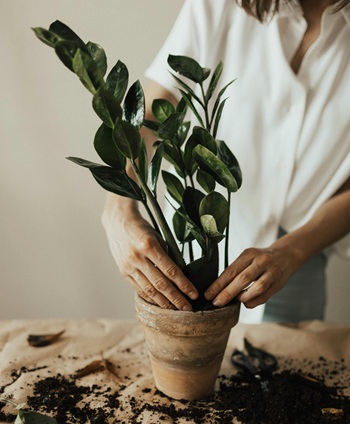The ZZ plant (Zamioculcas zamiifolia) is one of the most popular houseplants, known for its attractive glossy green leaves and remarkable resilience. Whether you’re a seasoned plant enthusiast or a beginner looking for an easy-care indoor plant, the ZZ plant is an excellent choice.
Characteristics of the ZZ Plant
Native to Eastern Africa, the ZZ plant is a hardy perennial that can tolerate neglect, low light conditions, and infrequent watering. It grows from rhizomes, which store water, making it exceptionally drought tolerant. The leaves are thick, waxy, and deep green, giving the plant a striking appearance that enhances any indoor space.
One of the ZZ plant’s notable features is its air-purifying qualities. It is known to filter toxins such as xylene, toluene, and benzene from the air, contributing to a healthier indoor environment.
How to Care for a ZZ Plant
Light Requirements

ZZ plants prefer bright, indirect light but can adapt to low-light conditions. While they can tolerate some direct sunlight, prolonged exposure can scorch their leaves. If placed in very low light, growth may slow down, but the plant will survive.
Watering Needs
One of the biggest advantages of the ZZ plant is its drought tolerance. Watering should be done sparingly, allowing the soil to dry out completely between waterings. Overwatering can lead to root rot, which is one of the few issues that can seriously harm the plant. Typically, watering every two to three weeks is sufficient, depending on the indoor environment and season.
Soil and Potting
ZZ plants thrive in well-draining soil. A standard potting mix with added perlite or sand works well. The pot should have drainage holes to prevent excess moisture retention. Repotting is only necessary every couple of years or when the plant outgrows its container.
Temperature and Humidity
ZZ plants prefer temperatures between 65-75°F and can tolerate normal household humidity levels. Avoid placing them in cold drafts or near heating vents, as extreme temperature fluctuations can stress the plant.
Fertilizing
Fertilize the ZZ plant lightly during the growing season (spring and summer) with a balanced, diluted liquid houseplant fertilizer once a month. There is no need to fertilize during fall and winter when growth naturally slows down.
Pruning and Maintenance
ZZ plants require minimal pruning. Simply remove any yellow or damaged leaves to maintain their attractive appearance. Dusting the leaves occasionally will help keep them glossy and allow the plant to photosynthesize efficiently.
Common Issues
- Yellowing Leaves: Often a sign of overwatering. Allow the soil to dry out before watering again.
- Wrinkled or Drooping Leaves: This may indicate underwatering. Water the plant thoroughly and monitor moisture levels.
- Pests: ZZ plants are relatively pest-resistant, but they may occasionally attract spider mites or scale insects. Wiping the leaves with a damp cloth or using insecticidal soap can help control infestations.
Conclusion
The ZZ plant is an excellent choice for those looking for a low-maintenance, stylish houseplant that thrives in a variety of conditions. With minimal care, it will continue to grow beautifully, adding a touch of greenery to your home. Whether you place it in an office, bedroom, or living space, the ZZ plant is sure to be a resilient and attractive addition to your indoor garden.




Comment here